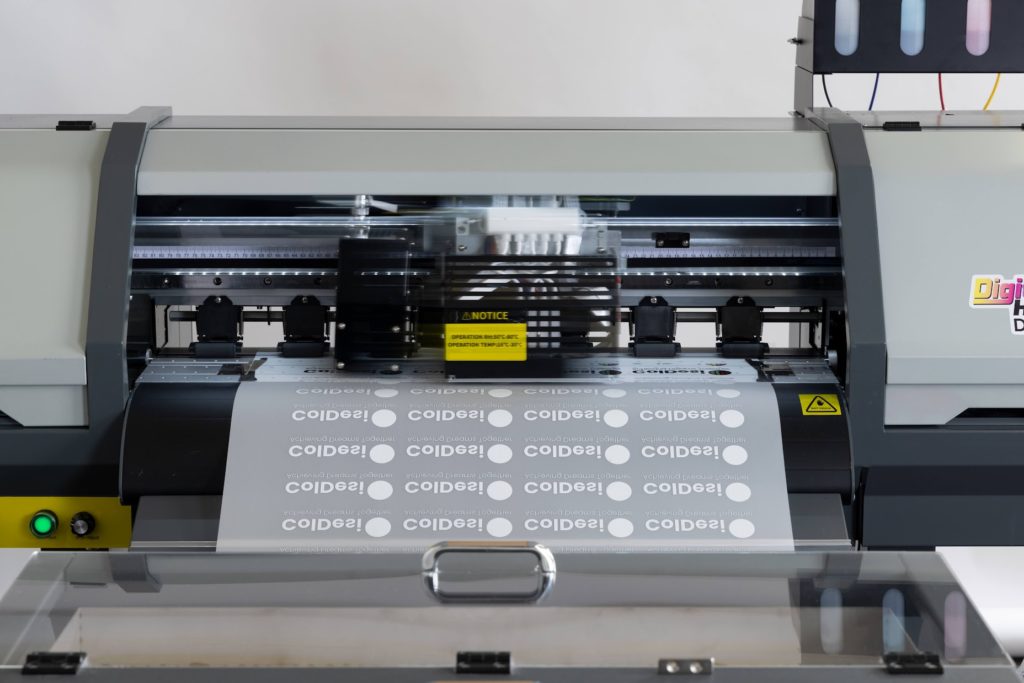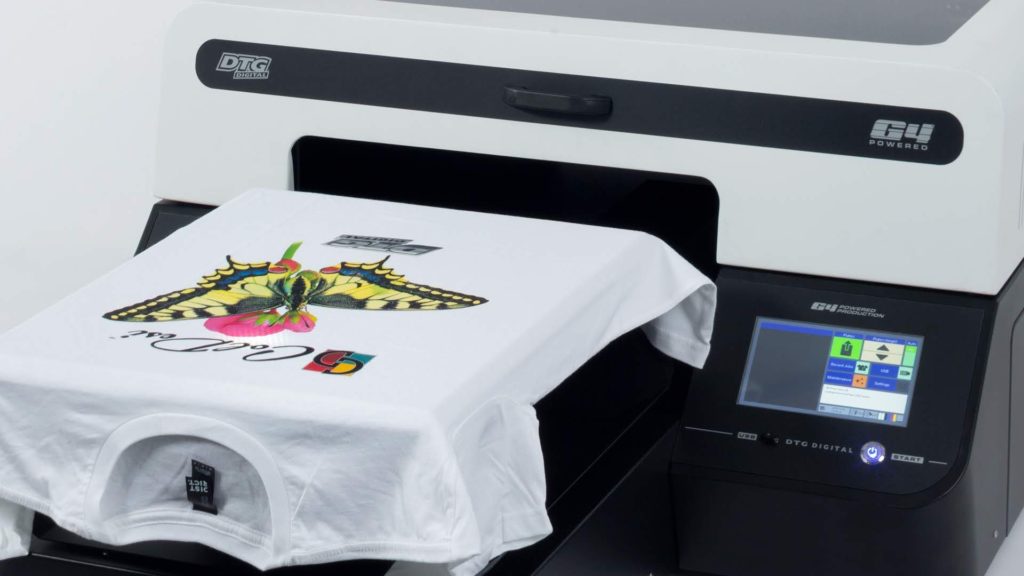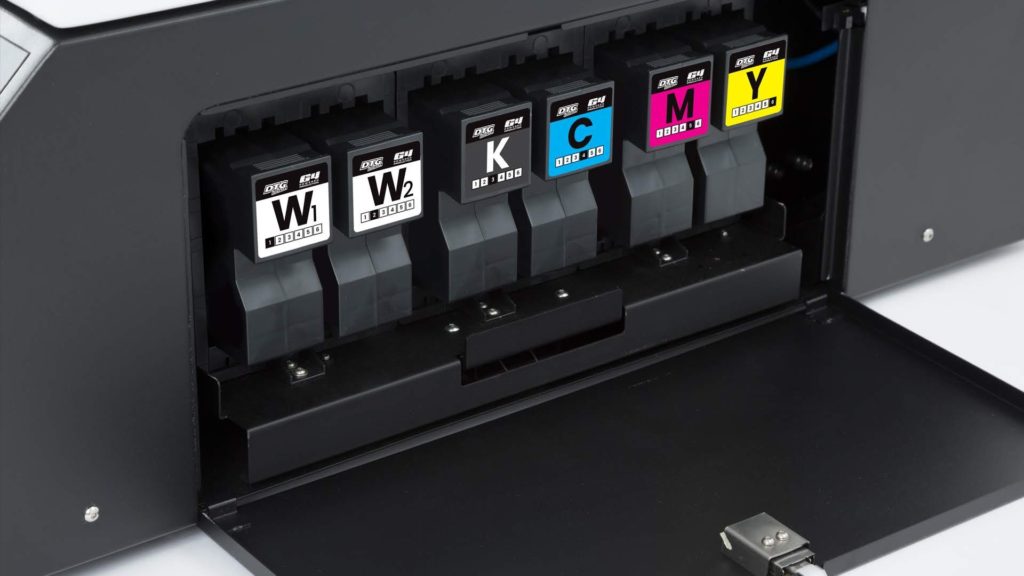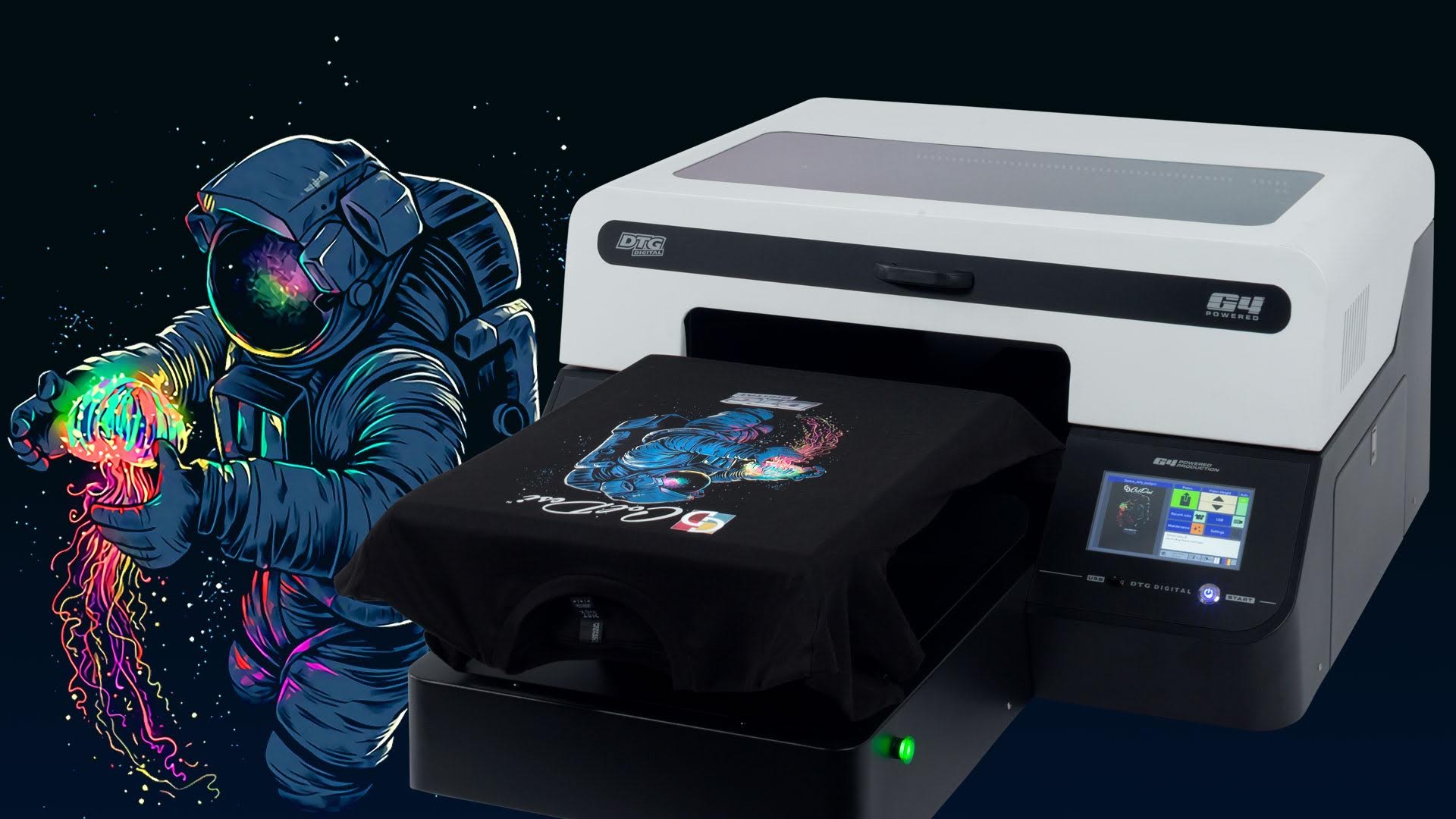There’s really no particular technology that’s “King of Printing.” Many shops that are past that initial startup stage have come to realize that there’s no one thing that customers want, or that prints on every material. Or that solves all customization problems.
Every technology has pros and cons. But with DTF (direct-to-film) printers being the latest tech on everyone’s buy list — what are the cons?
Are DTF printers going to take over the custom T-shirt printing business? Or make the kind of impact that white toner printers made four or five years ago (and are still making today)?
But first some housekeeping:
What is DTF printing and how does it work?
DTF stands for direct-to-film the same way that DTG stands for direct-to-garment. Fundamentally DTF is an inkjet transfer printing process:
inkjet printing + hot melt “glue” + transfer film
Think of this process like making white toner printer transfers. With white toner printers, you print your image onto a film with an LED printer. Then, you heat press that onto a kind of glue sheet. After “marrying,” you have a ready-to-use full-color transfer.
With DTF printing, you print your image onto a film with an inkjet printer. Then, you cover it with what’s called “hot melt” powder, then dry it. After it’s dry, you have a ready-to-use full-color transfer.
Though unlike white toner transfer printing, there are wider format DTF printer options. Because with an inkjet printer that’s been converted to DTF, it’s a manual, one-transfer-at-a-time process.
But there are also 24″ ROLL printers that are designed for direct-to-film. For about the same prices as a standard DTG printer like the DTG G4 or Epson or Brother DTG.
Which is better DTG or DTF?
In other words — if you have $20K-$25K in your hand and you want to start or grow a custom T-shirt business, which one should you get? Is DTG still best? The short answer is yes — and no.
Advantages to DTF printing over DTG printing
Commercial DTF printers are VERY fast
For example, you can print over 500 2″ X 4″ logo transfers in about 15 minutes with a commercial, high volume DTF printer, like the DigitalHeat FX DTF-24H2. That includes hot melt application and curing the transfer with an attached unit.

Then it’s a 15-second heat press to apply it to a shirt.
So, if you want to get a 500-piece order out and only have one heat press, you can estimate about 30 seconds per shirt application time.
500 pieces x 30 seconds = 250 minutes or about four hours for application. Just add the 15 minutes of print time and you can see that it’s a pretty fast and efficient way to do big orders.
Fabric options are MUCH better

You can apply a DTF transfer to just about any fabric. Any color.
DTG does an amazing job on white poly and light or dark-colored cotton. And a fair job on blends — if you’re careful. And it will print on dark poly too if you’re very patient, very precise, and willing to experiment.
A DTF transfer loves polyester shirts. Dark-colored synthetics are great; absolutely on light colors too. Cottons look terrific in any color — even cheap cotton shirts look good! And stretchy materials work too.
No size restrictions
Not “no” size restrictions, but if for some reason you need a 24″ X 100″ transfer and have a heat press you can use to apply it — DTF roll printing is the way to go.
Since ColDesi stopped producing the M2 DTG printer, which had a 24″ X 17.7″ print area there’s been no way to get a really big DTG print — and no white toner options either.
The transfer business
There are big companies in the custom apparel universe that make big money selling DTF and DTF-style transfers.
Because, like DTG and white toner, DTF is a digital process, you can make just one. And since the transfers are compatible with more substrates, and the heat press requirements minimal, the DTF transfers are very easy for the end customer too.
So, DTF transfers have advantages over screen-printed ones because you can easily do one-offs. It has advantages over white toner and sublimation transfers because you can apply them to more fabrics.
Right now, making transfers is not an option for direct-to-garment printer owners. So that whole transfer business opportunity is unavailable to DTG printer owners.
But give it a few months and you will see changes to that. DTF will still have the edge because you’ll be manually applying the hot melt powder and drying separately though.
Advantages to DTG printing over DTF printing
With all this in mind – why would you ever choose a DTG printer over a commercial direct-to-film printer for the same price?
You really just need to print one shirt
Commercial, roll-fed direct-to-film printers can definitely print just one transfer. But it’s a bit of a waste of square inches on that 24″ roll of transfer material.
While it’s very efficient to print 50-plus individual designs in one run, it’s not very efficient to just do one shirt in a day. This is where DTG is the perfect machine. Load up a single design, prep the shirt, print, and press. In a retail environment, the customer can be in and out in 10 minutes or less.
Speaking of retail environments
A DTG G4, in particular, is great for a retail or customer-facing business. The printer itself offers a touchscreen control panel and a vacuum platen. You can also store commonly printed designs in the control panel’s memory and load the shirt and print from there.
While the DigitalHeat FX DTF-24H2 is a great machine, it is large when you include the dryer, and loud because of the automatic shaker to apply the hot melt powder to the transfers. Not typically OK for a retail environment.

DTG prints beautiful images
DTF printers look great — bright colors, good gradations, and fades too. But direct-to-garment produces the best quality prints. And it’s unique in its ability to create fades to nothing, and smoke or flame effects because it prints right onto the shirt.
All transfer printers share the same limitation — the transfer ends somewhere. Not so for DTG.
DTG feels amazing
DTF printers probably produce the softest feel/hand of any transfer technology. It doesn’t feel “plasticky” at all. But you can still tell it’s there.
DTG prints, especially when printing on light garments without white ink, feel like the shirt. That’s as good as you can hope for if you’re decorating an already manufactured garment.
What is the best printer for me?

If you have a home-based business or smaller shop that sells custom Ts in the dozens, or even hundreds, you should seriously consider a direct-to-garment printer.
DTG is a mature technology that produces great results.
On the other hand, if you are a high-volume printer that makes hundreds or thousands of custom Ts a day, multiple placements, tags, etc. then a commercial DTF should be on your “A” list to check out.
And especially if you are right now considering a high-volume DTG printer —you owe it to yourself to see why such a high-volume DTF printer may be a better option.





